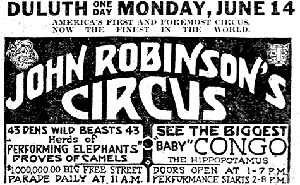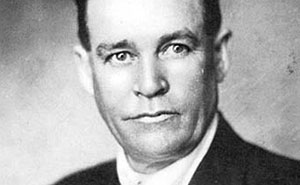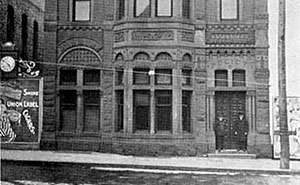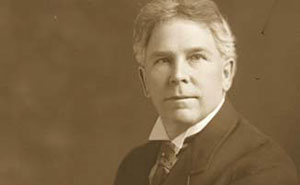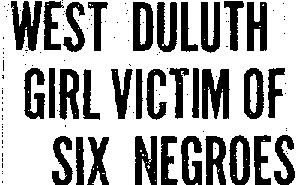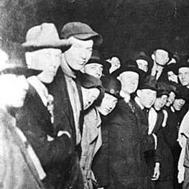
Home
Choose a Menu
-
duluthlynchingsDuluth Lynchings
Home -
timelineTimeline
-
oralOral Histories
-
peoplePeople
-
backgroundBackground
-
lynchingsThe Lynchings
-
legalLegal Proceedings
-
incarcerationsIncarcerations
-
afterwardsAfterwards
-
additional-resourcesAdditional Resources
-
videosVideos
-
documentsDocuments
Timeline
The Timeline details the series of events in the hours before, and immediately after, the lynching of three young Black men – Elias Clayton, Elmer Jackson, and Isaac McGhie – at the hands of an angry mob in downtown Duluth on June 15, 1920.
A) John Robinson Circus B) DMN Ore Docks C) DWP Railyards D) Duluth Jail E) Tusken Residence F) Path of Truck G) Site of the Lynching H) County Courthouse
- 8:00 PM – Irene Tusken arrives at Circus, meets James Sullivan there.
- 9:45 PM – Sullivan and Irene Tusken contact circus workers.
- 2:00 AM – After long delay, Sullivan tells father that rape ocurred.
- 4:30 AM – Officers arrive at DWP rail yards in West Duluth.
- 7:00 AM – Six men are jailed.
- 10:00 AM – Graham makes examination at Tusken home, no evidence of rape.
- 5:00 PM – Crowds gather.
- 7:30 PM – Truck begins cruising Superior St., enlisting lynch mob.
- 8:40 PM – Crowd numbers 10,000.
- 9:30 PM – Mob enters jail.
- 11:30 PM – All 3 men are hanged.
- 7:30 AM – National Guardsmen arrive, move to protect Black citizens.
At the circus
June 14, 8:00 p.m. — Irene Tusken arrives at circus, meets Sullivan there
On a warm June evening, Irene Tusken arrives at the John Robinson Circus, meeting her friend James Sullivan. The circus, in Duluth for a one-day stop, is typical of its day — acrobats, tightrope walkers, and performing elephants and camels underneath colorful circus tents. Held at a park just off of a major streetcar route, the circus is a convenient location for Tusken and Sullivan to meet.
Alleged rape
June 14, 9:45 p.m. — Circus Grounds - 39th Avenue & Third Street
Irene Tusken and James Sullivan walk to the rear of the main circus tent and watch as Black laborers, employed by the circus, pack up equipment and tear down tents preparing for the circus to depart. What happens next remains unknown, but Tusken and Sullivan both later claim that six young Black circus workers forced the couple to a deserted location and raped Tusken while Sullivan was held at gunpoint. It would later prove to be an unlikely story. Compelling evidence asserted no rape ever took place.
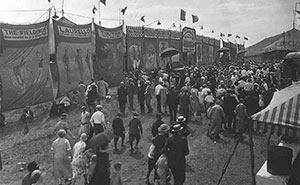
Visitors walking the circus grounds.
A call to police
June 15, 2:00 a.m. — Duluth, Missabe and Northern Ore Docks South of Downtown
After taking a roundabout and unhurried walk from the streetcar stop, Irene Tusken arrives at her house. She goes up to bed that evening without mentioning anything to her parents. At midnight, James Sullivan, a night worker at the Duluth, Missabe and Northern Ore Docks, reports for work. At 2:00 A.M., more than four hours after the alleged incident, he tells his father, a superintendent at the ore docks, the story of the rape. Around 3:00 A.M. Duluth Police Chief John Murphy receives a phone call from Sullivan's father reporting the allegation.

Missabe ore docks, Duluth.
Arrests made
June 15, 4:30 a.m. — Duluth, Winnipeg & Pacific Rail yard - Northwest of corner of Raleigh and 68th Avenue W., West Duluth
Immediately after receiving the phone call, Police Chief Murphy orders the John Robinson Circus not to leave Duluth. Packed and ready for the next stop on the tour, the circus trains are stopped at the Duluth, Winnipeg & Pacific Railyard just before leaving town. Assisted by approximately fifteen fellow officers, Chief Murphy apprehends thirteen Black men from the train cars and questions them. Seven are released; six are arrested.
Chief of Police John Murphy.
Six Black men are jailed
June 15, 7:00 a.m. — Duluth Jail - East end of block bounded by 1st & 2nd Avenues East, Michigan & Superior Streets
The six arrested Black men, including Elias Clayton, Elmer Jackson, and Isaac McGhie, are taken to the Duluth city jail, located inside the police station on the corner of Second Avenue and Superior Street. The jailed suspects are further questioned about their knowledge of the alleged rape.
Doctor finds no evidence of rape
June 15, 10:00 a.m. — Tusken Residence - 4836 West Sixth Street
Dr. David Graham, a family physician, examines Irene Tusken at her parents' home in West Duluth. Though rumors would later circulate that she was dead or dying, Dr. Graham's examination shows she is in good physical condition with no evidence of rape or assault. No other physical evidence of an attack is available, for Irene's clothes from the night before have already been washed.
Dr. David Graham, Tusken family physician.
Crowd begins to gather
June 15, 5:00 p.m. — Duluth Jail - East end of block bounded by 1st & 2nd Avenues East, Michigan & Superior Streets
News of the alleged rape proliferates rapidly amoung Duluthians. Rumors and hearsay are spread by word of mouth and a front-page article in the evening paper,The Duluth Herald, proclaims “West Duluth Girl Victim of Six Negroes.” An irate crowd begins to gather outside the city jail.
Enlisting mob members
June 15, 7:30 p.m. — Along Superior Street between 7th Avenue West & 3rd Street East
A truck owned and driven by Louis Dondino cruises Superior Street. The back of the truck is filled with men encouraging people to lynch the prisoners. The men are wielding a thirty-foot rope and hollering, “Come on and join the necktie party!” “Come on boys, let’s get ‘em!” Several hitch a ride in back or follow on foot. The drive ends outside the city jail, and the men jump off to join the growing crowd.

View of a delivery truck.
Crowd estimated between 1,000-10,000
June 15, 8:40 p.m. — Duluth Jail - East end of block bounded by 1st & 2nd Avenues East, Michigan & Superior Streets
The crowd of rioters and curious onlookers, including women and children, grows to an estimated 1,000 to 10,000 persons. With shouts of “Lynch him!” and “Remember the girl!” the mob storms the jail. They meet little resistance from the shorthanded and disorganized police. Having been ordered by Commissioner William F. Murnian not to fire their guns, the police attempt to control the crowd with blasts of water from firehoses. One of the hoses is soon stolen by the mob and turned on the police.

Photograph of the mob gathered outside the city jail.
Mob enters jail
June 15, 9:30 p.m. — Duluth Jail - East end of block bounded by 1st & 2nd Avenues East, Michigan & Superior Streets
Wielding bricks, rails, and heavy timbers, the mob forces its way inside the jail, first through the garage and then through the front entrance, tearing down doors and breaking windows. After destroying the cell door locks, they extract all six Black men from their cells. Three of the six men — Elias Clayton, Elmer Jackson, and Isaac McGhie — are pronounced guilty by the mob in a mock trial held inside the jail.
Lynchings
June 15, 11:30 p.m. — Corner of First Street and Second Avenue East
The mob drags Clayton, Jackson, and McGhie one block to a tall lamppost on the corner of First Street and Second Avenue East. Over the yelling and commotion, Reverend William Powers, pastor at Sacred Heart Cathedral, pleads, “The crime committed is most horrible, but men, you do not know these Negroes are the guilty men. I appeal to you to allow the law to take its course. In the name of God and the church I represent I ask you to stop.” His plea is ignored. The three men are brutally beaten and hanged from the lamppost: first Isaac McGhie, then Elmer Jackson, and last, Elias Clayton.
After the violent deaths, rioters and onlookers crowd together to pose with the bodies for a photograph later distributed as a postcard.
National guard arrives
June 16, 7:30 a.m. — St. Louis County Jail - Third Street & 6th Avenue East
On the morning after the lynchings, the Minnesota National Guard under the command of Adjutant General W.F. Rhinow, arrives to secure Duluth and protect the three surviving Black prisoners. These prisoners, along with ten additional Black suspects from the circus, are moved under heavy guard to the St. Louis County jail. Though the city’s streets are now calm, not everyone feels safe. Black residents stay inside and lock their doors, fearful of further violence. Tensions remain high during the months of trials that follow.
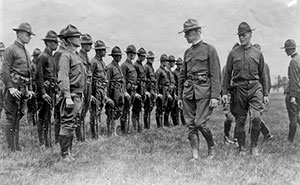
Minnesota National Guard on Inspection.

